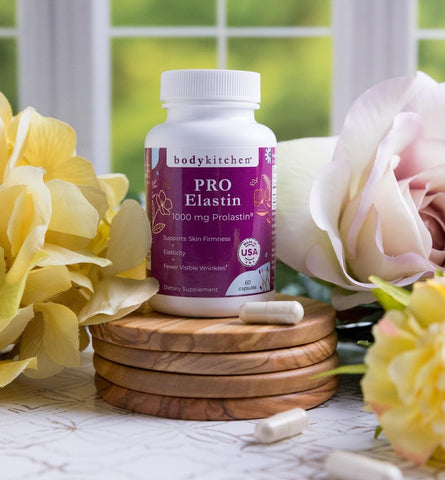Vitamin D Deficiency During Winter Months
Approximately 42 percent of the U.S. population is considered to be vitamin D deficient, and for many people, the problem often worsens during the winter months. Read on to learn more about why this is the case and what you can do to increase vitamin D levels during the winter months and beyond.
What Is Vitamin D?
Vitamin D is one of the essential vitamins that your body needs to remain in good health and perform key processes. Unlike other vitamins, your body can actually manufacture vitamin D in response to sun exposure.
Benefits of Vitamin D
Some potential benefits of vitamin D include:
- Healthy bones and muscles: Vitamin D helps your body absorb and use the calcium needed to control muscle function and maintain strong bones and teeth.
- Cancer prevention: Some studies have found a link between low levels of vitamin D and certain forms of cancer, such as cancer of the colon, lung, pancreas, and breast, which has led some researchers to hypothesize that vitamin D may help lower the risk of cancer - but more research is needed to prove this potential benefit.
- Heart health support: Your body needs vitamin D to regulate blood pressure and for healthy circulation.
- Mental health support: Early research has found that vitamin D receptors in the brain may be involved with symptoms of depression, leading to speculation that the nutrient may support mental well-being.
- Glucose metabolism assistance: Vitamin D is necessary to keep blood sugar levels within a healthy range.
Symptoms of Low Vitamin D Levels
Some symptoms of low vitamin D levels include:
- Lack of energy
- Problems sleeping
- Bone pain
- Muscle aches
- Depression
- Hair thinning/loss
- Reduction in muscle strength
- Lack of appetite
- Increase in the number of illnesses/infections
- Paleness of the skin
Symptoms are more common in people with severe vitamin D deficiency, which is rare in the U.S. In the U.S., you're more likely to have mild symptoms or no symptoms of deficiency at all.
Why Do People Experience Vitamin D Deficiency During Winter?
Vitamin D deficiency can occur in the winter due to changes in our behavior. When colder weather arrives, we're less likely to spend time outdoors, so our bodies have less opportunity to manufacture vitamin D. If we do venture outside, we usually wear more layers of clothing and cold weather accessories, so less of our skin is exposed to sunlight and our bodies produce vitamin D in smaller quantities.
How to Get Vitamin D in the Winter
To get more vitamin D during the winter months, try pursuing the following tips:
Eat Dietary Sources of Vitamin D
Although your body is designed to meet most of your needs for vitamin D, the vitamin is present in some foods as well. Some of the best sources of the vitamin are egg yolks, canned fish such as sardines, fatty fish like tuna and wild salmon, beef liver and mushrooms. You can also find breakfast cereals, milk, orange juice and other foods fortified with vitamin D.
Increase Your Exposure to Sunlight
Although the weather may be chilly, schedule time outdoors whenever possible. Dress appropriately for the weather to protect yourself from the elements. Taking up a winter sport like snowshoeing or skiing where appropriate can be a great way to get some sunlight and exercise at the same time.
Try Vitamin D Supplements
Vitamin D supplements can bridge the dietary gap and decrease the risk of deficiency during winter months and throughout the rest of the year. Medical providers sometimes recommend that people take vitamin D along with calcium to support bone health and reduce the risk of osteoporosis.
Combination supplements that feature vitamin D3 and K2 are becoming increasingly popular because they contain a second vitamin that supports bone health: vitamin K2. In the body, vitamin K2 helps to control the distribution of calcium, so the mineral is available to build strong bones and teeth and less likely to develop deposits elsewhere in the body.
When choosing a vitamin D supplement, compare products carefully. Products optimized to enhance bioavailability may be easier for your body to use, provide benefits for a longer period, and give you more benefits from a smaller dose. Body Kitchen Vitamin D + K2 is a high-absorption formula that provides vitamins D3 and K2. The latter nutrient comes in the form of Menaquinone-7 or MK7, which has been clinically shown to remain active in the body for longer than other forms.
How Much Vitamin D Should I Take in the Winter?
How much vitamin D you should take in the winter depends on your age, gender, weight, height, and other factors. The potency of the supplement you choose can also impact the optimal dosage. As a result, it's best to consult your medical provider for individualized advice regarding how much vitamin D you need.
References:
https://health.unl.edu/9-vitamin-d-deficiency-symptoms-and-10-high-vitamin-d-foods
https://mybodykitchen.com/products/vitamin-d-k2-60-ct
https://ods.od.nih.gov/factsheets/VitaminD-HealthProfessional/#h7
https://perks.optum.com/blog/5-ways-to-avoid-a-vitamin-d-deficiency-during-winter/
https://www.uth.edu/news/story.htm?id=0520d178-ab7a-49af-858e-a7adeec0b30e
https://www.waterstoneonaugusta.com/vitamin-d-deficiency-in-winter/














